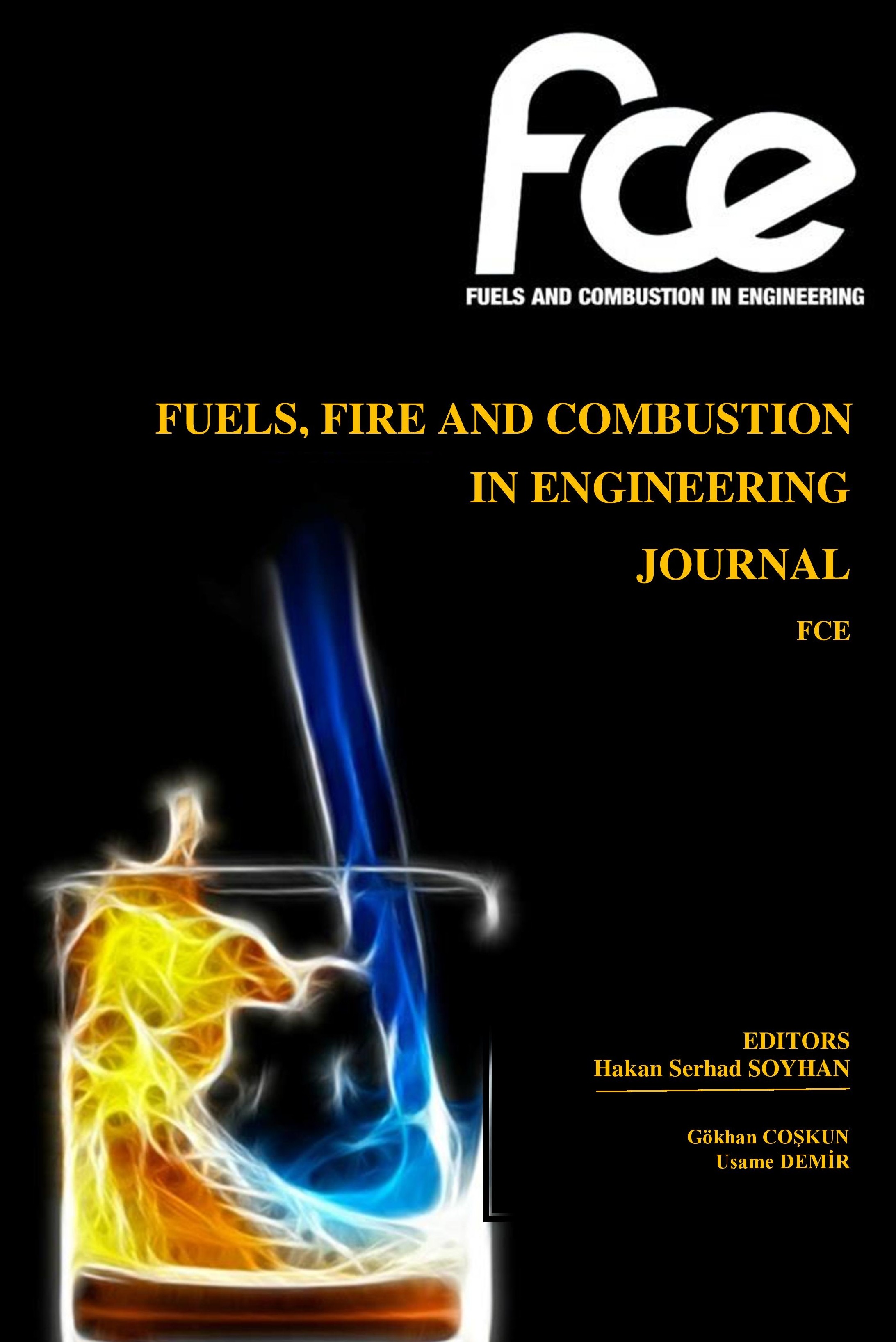Bir Saha Çalışması: Süt Ürünleri Üretim Tesislerinde Termal Konfor
Bu çalışmanın amacı, sektörde çalışan işçilerin termal konfor durumlarını belirlemek ve soğuk ve sıcak etkilerine yönelik önlemler sunmaktır. Ölçümler Kocaeli çevresinde bu kapsamda faaliyet gösteren 9 işletmede 2016 Şubat ayı ile Ekim ayı arasında 123 noktada ISO 7726 standardına uygun olarak gerçekleştirilmiştir. Değerlendirmeler üç ana gruba ayrılmıştır; normal, soğuk ve sıcak ortamlar. Bu ortamları değerlendirmek için sırasıyla PMV, IREQ ve WBGT yöntemleri kullanılmıştır. Yöntemlerin kullanılmasında özel bir sıra izlenmiştir. Ayrıca çalışanların sosyodemografik özellikleri ve ortam kaynaklı şikayet ve önerilerini belirlemek için anketler kullanılmıştır. Yapılan ölçümler sonucunda 20 noktada IREQ değeri elbise yalıtım değerinden küçük çıkmıştır. 10 noktada WBGT değeri referans değerin üzerinde çıkmıştır. 36 noktada ise sıcaklık WBGT sınır değerine çok yakın çıkmıştır. Anketlere göre ise genel olarak çalışanların havalandırma yetersizliğinden, iş kıyafetinden ve cereyan (hava akımı) etkisinden rahatsız oldukları görülmüştür.
Anahtar Kelimeler:
Termal konfor, İş sağlığı ve güvenliği, PMV
A Field Study: Thermal Comfort in Dairy Production Plants
The aim of this study is to determine the thermal comfort conditions of workers in the industry and to provide measures for the effects of cold and heat. The measurements were carried out in accordance with ISO 7726 standard at 123 points between February 2016 and October in 9 enterprises operating in this scope in the Kocaeli region. The evaluations are divided into three main groups; normal, cold and hot environments. PMV, IREQ and WBGT methods were used to evaluate these environments, respectively. A special order has been followed in the use of the methods. In addition, questionnaires were used to determine the sociodemographic characteristics of the employees and their complaints and suggestions related to the environment. As a result of the measurements made, the IREQ value at 20 points was lower than the suit insulation value. At 10 points, the WBGT value exceeded the reference value. At 36 points, the temperature was very close to the WBGT limit value. According to the surveys, it was observed that the employees were generally disturbed by the lack of ventilation, work clothes and the effect of draft (air flow).
Keywords:
Thermal confort, Occupational health and safety, PMV,
___
- [1] K.C. Parsons, “Environmental ergonomics: A review of principles, methods and models.” Applied Ergonomics, vol. 31, no.6, pp. 581-94, 2000.
- [2] T. Pienimäki, “Cold exposure and musculoskeletal disorders and diseases. A review.” Int J Circumpolar Health. Vol 61 no.2, pp. 173-82, 2002.
- [3] A.V.M. Oliveira, A.R. Gaspar, D.A. Quintela, “Occupational exposure to cold thermal environments: a field study in Portugal.” European Journal of Applied Physiology. Vol. 104, no. 2, pp. 207-14, 2008.
- [4] T.M. Mäkinen, J. Hassi, “Health problems in cold work.” Industrial Health. vol. 47, no. 3, pp. 207-20, 2009.
- [5] K.C. Parsons, “International standards for the assessment of the risk of thermal strain on clothed workers in hot environments.” Annals of Occupational Hygiene. Vol. 43, no. 5 pp. 297-308, 1999.
- [6] T. Maeda, T. Kobayashi, K. Tanaka, A. Sato, S.Y. Kaneko, M. Tanaka, “Seasonal differences in physiological and psychological responses to hot and cold environments in the elderly and young males.” Elsevier Ergonomics Book Series, vol.1, pp. 35-41, 2008.
- [7] A. Hunter, C.A. Gibson, Z. Mbambo, M. Lambert, T. Noakes, “The effects of heat stress on neuromuscular activity during endurance exercise”, Pflugers Archiv European Journal of Physiology. Vol. 444, no. 6, pp. 738-43, 2002.
- [8] A.N. Yıldız, N. Bilir, “Subjective Evaluation of the Hot Work Environment”. Community Medicine Bulletin, vol 26, no.2, pp. 23-8, 2007.
- [9] R. Kosonen, F. Tan, “Assessment of productivity loss in air-conditioned buildings using PMV index.” Energy and Buildings, vol 36, no. 10, pp. 987-93, 2004.
- [10] H. Anttonen, A. Pekkarinen, J. Niskanen, “Safety at work in cold environments and prevention of cold stress.” Industrial Health. vol 47, no. 3, pp. 254-61, 2009.
- [11] ISO 7730 Ergonomics of the thermal environment - Analytical determination and interpretation of thermal comfort using calculation of the PMV and PPD indices and local thermal comfort criteria. 2005.
- [12] TS EN ISO 11079 Ergonomics of the thermal environment -- Determination and interpretation of cold stress when using required clothing insulation (IREQ) and local cooling effects. 2007.
- [13] TS EN 27243 Hot environments; estimation of the heat stress on working man, based on the WBGT-index (wet bulb globe temperature). 2002.
- ISSN: 2564-6435
- Başlangıç: 2016
- Yayıncı: Hakan Serhad SOYHAN
Sayıdaki Diğer Makaleler
Bir Saha Çalışması: Süt Ürünleri Üretim Tesislerinde Termal Konfor
Anil Can TÜRKMEN, Fatih DENİZ, Kursat Can ATA, Doç. Dr. Cenk ÇELİK
Koray ULUÇ, Gökhan COŞKUN, Ekrem BÜYÜKKAYA
Kerem İLBAY, Gökhan COŞKUN, Ekrem BÜYÜKKAYA
YANICI KİMYASALLARIN LEL HACİMLERİNDE PATLAYICI ATMOSFERİNİN BELİRLENMESİ
TERMİK SANTRALLERDE YANGIN GÜVENLİK ÖNLEMLERİNİN ANALİZİ; ZONGULDAK EREN ENERJİ ÖRNEĞİ
Kocaeli İli Yangın Karakteristiklerinin İncelenmesi
Muhammed Fatih PEKŞEN, Yasin KAYA, Yılmaz UYAROĞLU, Hakan Serhad SOYHAN, Doç. Dr. Cenk ÇELİK
Furkan KADI, Gökhan COŞKUN, Ekrem BÜYÜKKAYA
